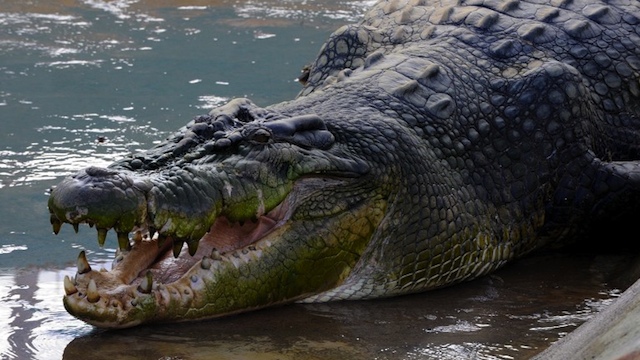SUMMARY
This is AI generated summarization, which may have errors. For context, always refer to the full article.

MANILA, Philippines – It is always a sad day for animal lovers when we hear that people are looking for exotic animals to keep in cages or in captivity because they want to be able to make money off of them.
Recently, my friends at the People for the Ethical Treatment of Animals (PETA) told me that the Bunawan government plans to capture another large crocodile. Yes, the same group that, when they caught Lolong, opted to keep him in a small pond.
We all know that Lolong died sooner than he should have because of the conditions he was made to live in while in captivity. But, I guess since the local government made money off of Lolong, they feel the need to capture another croc and keep him for show and tell?
READ: How captivity killed Lolong
Was being in the Guinness Book of World Records the only thing that mattered to us? We all know that Lolong was — I repeat “was” — the biggest croc in captivity. But it was short-lived since he died after 18 months. So what good was the record? (The Guinness Book of World Records had certified Lolong as the world’s biggest crocodile in captivity, measuring 6.17 m or 21 ft and 3 in and weighing 1,075 kg.)
From a little research on the Australian crocodile Cassius, who regained his title as the biggest croc in captivity after the death of Lolong, I learned that the Cassius was captured in the Northern Territory in 1984. He was transferred to the Australian wildlife zoo Marineland Melanesia on Green Island. The zoo has more than 50 crocodiles, from young creatures to more mature ones like Cassius.
Although I am not one who believes that creatures from the wild should be kept in a zoo — it is obvious that Cassius is in a facility that keeps him closest to his natural habitat. After all, he has been there for almost 30 years.
READ: Aussie croc now No. 1 after Lolong’s death
This is why PETA is asking officials to enact a policy against the future captures and confinement of crocodiles. PETA suggests that the government instead create tours for visitors to see crocodiles in their natural habitat.
PETA is also calling on Bunawan officials to provide the assurance that they won’t allow any more crocodiles to be taken from the wild, following the release of the necropsy performed on a wild-born Lolong and an independent review of the report from wildlife veterinarians.
The necropsy found that Lolong died from late-stage pneumonia, cardiac failure, multiple organ failure, and non-adaptive stress response — all of which can be attributed to his captivity.
READ: Lolong never should have been captured
At the same time it is good that the Protected Areas and Wildlife Bureau (PAWB) took a strong stance against the poor conditions in which Lolong was held captive.
Why is it that we have a need to show off animals? Is it an accomplishment to have the world’s largest crocodile in captivity? I would say yes if we, like first world countries, had the resources to keep it alive. But Lolong lived with us for about 18 months, made approximately P2 million for the province and then died a sad and painful death.
Did anyone really care that Lolong had suffered? I tend to think not, since the same local government wants to capture another croc and put it in the same pond.
Pathetic.
In the wild, crocodiles spend hours swimming and can regulate the buoyancy and temperature — called thermo-regulation — of their bodies. Lolong lived for 18 months in a concrete pen with a shallow pond and was denied access to water deep enough to submerge himself and float, which is essential to the well-being of crocodiles.
In addition, he was continuously exposed to the sun during the daytime. His inability to float in the shallow pond, combined with the constant pressure of the concrete floor on his underside and constant exposure, left him unable to thermo-regulate.
The necropsy reads, “Thermo-regulation is the most important behavioral adaptation of reptiles, and should have been provided as an integral part of the animals’ management.”
“Lolong would not have died if he hadn’t been captured, imprisoned, and confined to a totally inadequate concrete enclosure for the past 18 months,” says PETA campaigns manager Rochelle Regodon.
“PETA urges Bunawan not to make this same fatal mistake again. Leave crocodiles in the wild, where they belong.” – Rappler.com
For information, visit PETAAsiaPacific.com.
Add a comment
How does this make you feel?





There are no comments yet. Add your comment to start the conversation.